The Independent's journalism is supported by our readers. When you purchase through links on our site, we may earn commission.
I swapped the gym for a TRX suspension trainer, and I was impressed by the results
This time-efficient training tool can transform your exercise routine with fun, efficient workouts
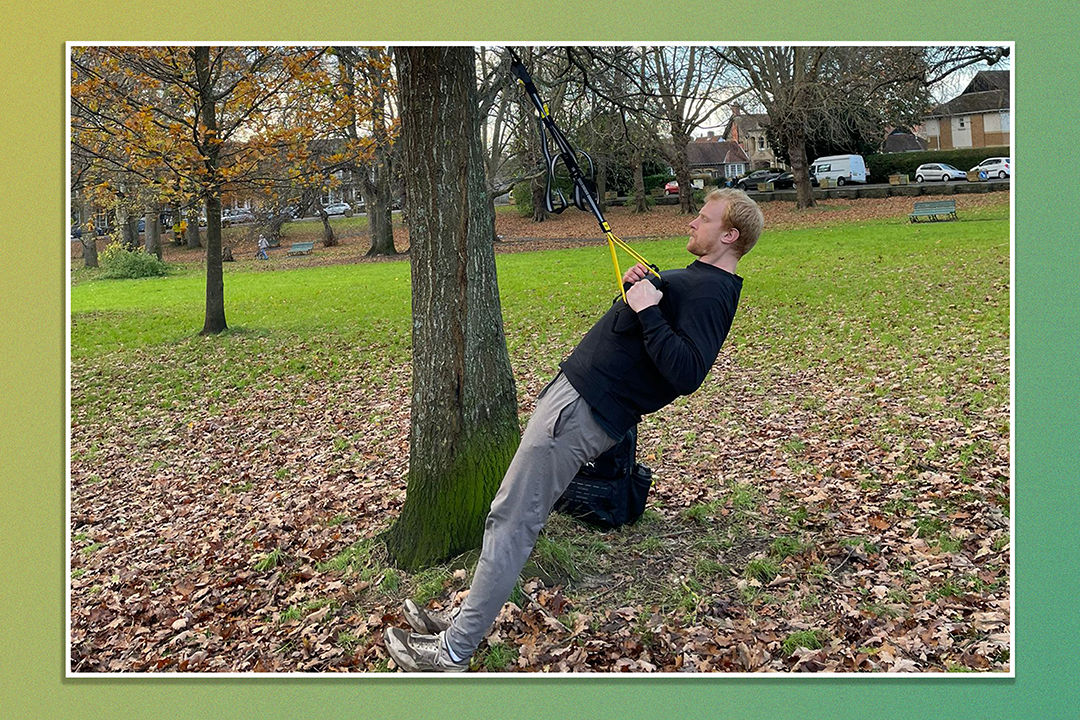
Gym-free workouts are on the up, and from what I’ve seen as a fitness writer, this trend is only going to gain momentum. It makes sense. In an age where we’re busier than ever, they’re cheaper and less time-consuming than a trip to the gym. But in the absence of personal trainers and equipment, how do you make gym-free workouts fun, varied and effective?
The TRX suspension trainer could solve this problem. The versatile strap can be slung over a door or hung from any sturdy anchor point overhead, then you can use the handles on either end to push and pull your way to a full-body workout. There’s also an app filled with sessions to suit most fitness goals.
For these reasons and more, TRX straps are loved by NFL players, supermodels and celebrities Lady Gaga, Jennifer Lopez and the Kardashians, who all incorporate it into their workouts. But is it a worthy investment, and could it replace the gym?
As someone who loves lifting weights, I wanted to find out. So I packed the straps into my gym bag and headed to my local park to try a workout from Anthony Mayatt, a TRX coach and owner of Breathe Fitness London. Here’s how I got on.
The TRX suspension trainer I used:
TRX move system: Was £149.95, now £134.96, Trxtraining.eu
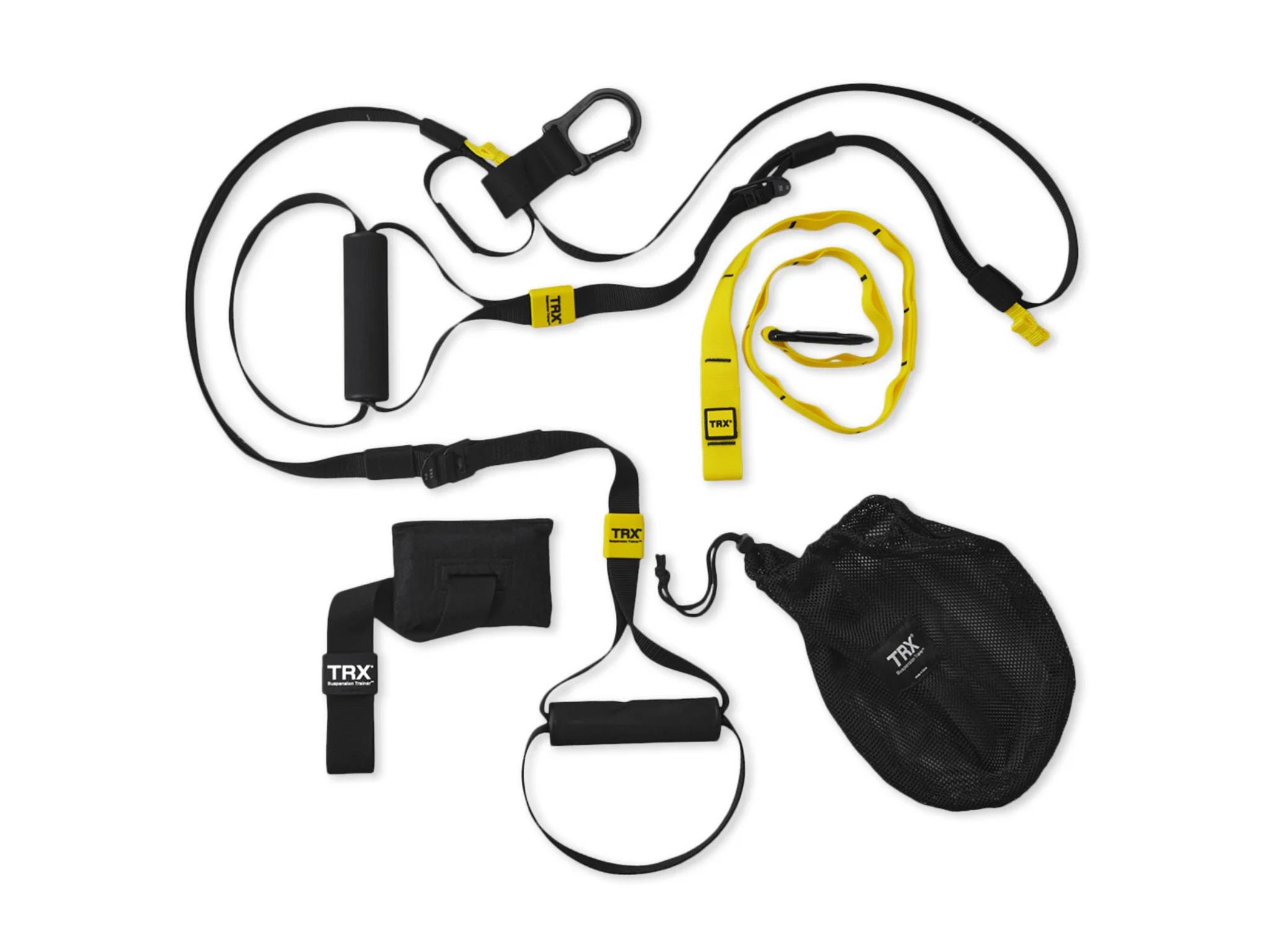
I used the TRX move system, which is the brand’s cheapest suspension trainer option. It comes with the signature straps, as well as a door jam for indoor use, a handy carry bag and an anchor point so you can loop it around any sturdy parallel branch or pull-up bar. You also gain access to a 30-day trial of the TRX app.
How to do trainer Anthony Mayatt’s TRX workout
- TRX low row x30 seconds
- TRX front squat x30 seconds
- TRX chest press x30 seconds
- TRX lunge x30 seconds
- TRX power pull x30 seconds
- TRX hip press x30 seconds
- TRX pike x30 seconds
Complete the exercises above as a circuit, performing each one for 30 seconds before progressing to the next move. You should need minimal rest as consecutive exercises do not target the same muscle groups, although I found I took a few seconds between some moves to adjust the length of the straps.
You can adjust the number of rounds you perform depending on your fitness level and the time you have available. I had a spare 20 minutes during my lunch break, so opted for four rounds, with each round taking roughly five minutes.
TRX low row
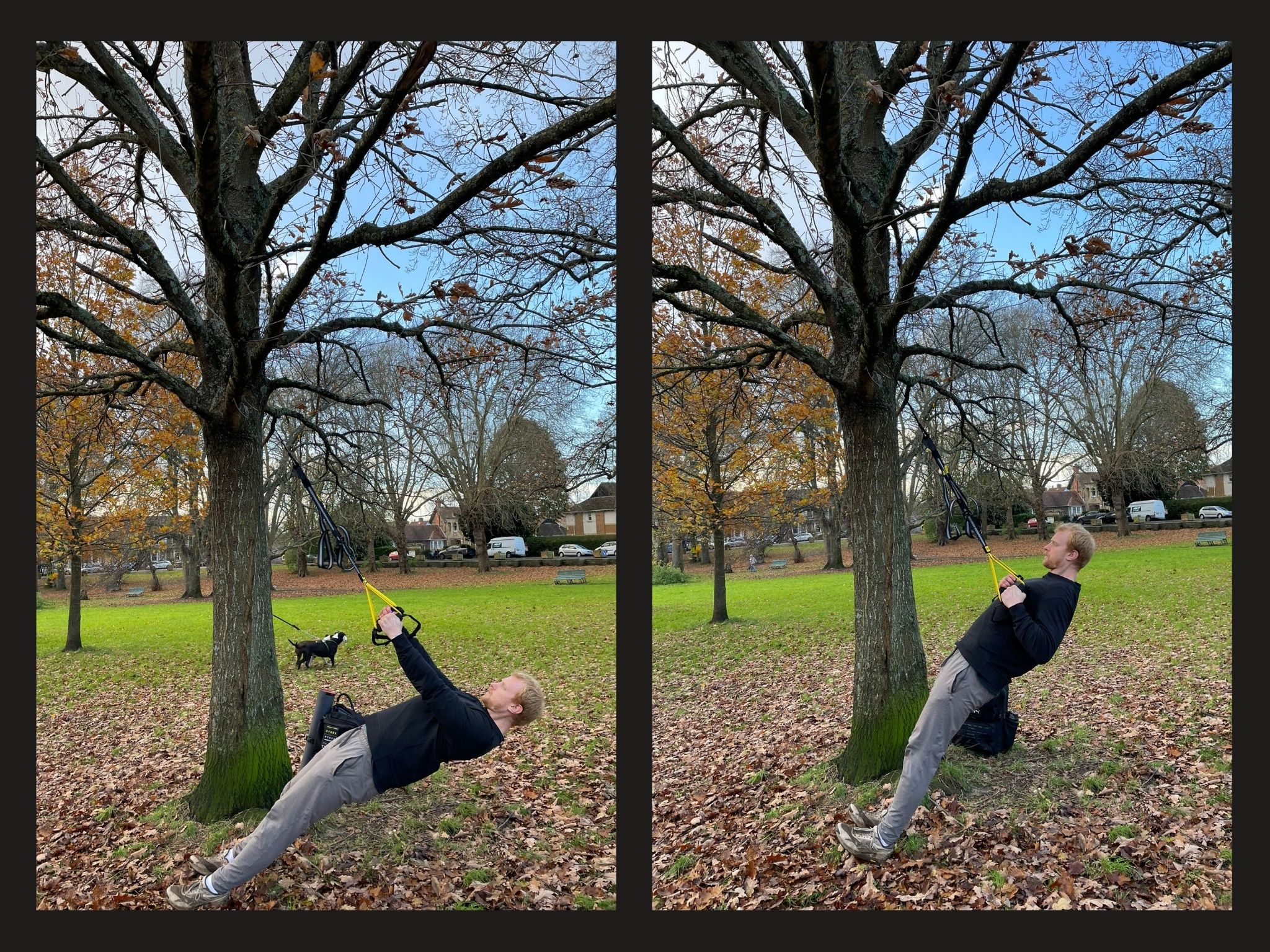
Reps: 30 seconds
- Set the straps to a short length and stand facing your anchor point.
- Pull your shoulders back and down, hold the straps on either side of your chest with your palms facing each other, and walk your feet forward until you feel a squeeze in your back muscles. The further you walk your feet forward, the harder this exercise will be.
- Slowly extend your arms to lower your body towards the ground then, keeping an active plank position (your legs and torso form a straight line) throughout, pull yourself back up towards the anchor point by driving your elbows past your torso.
TRX front squat
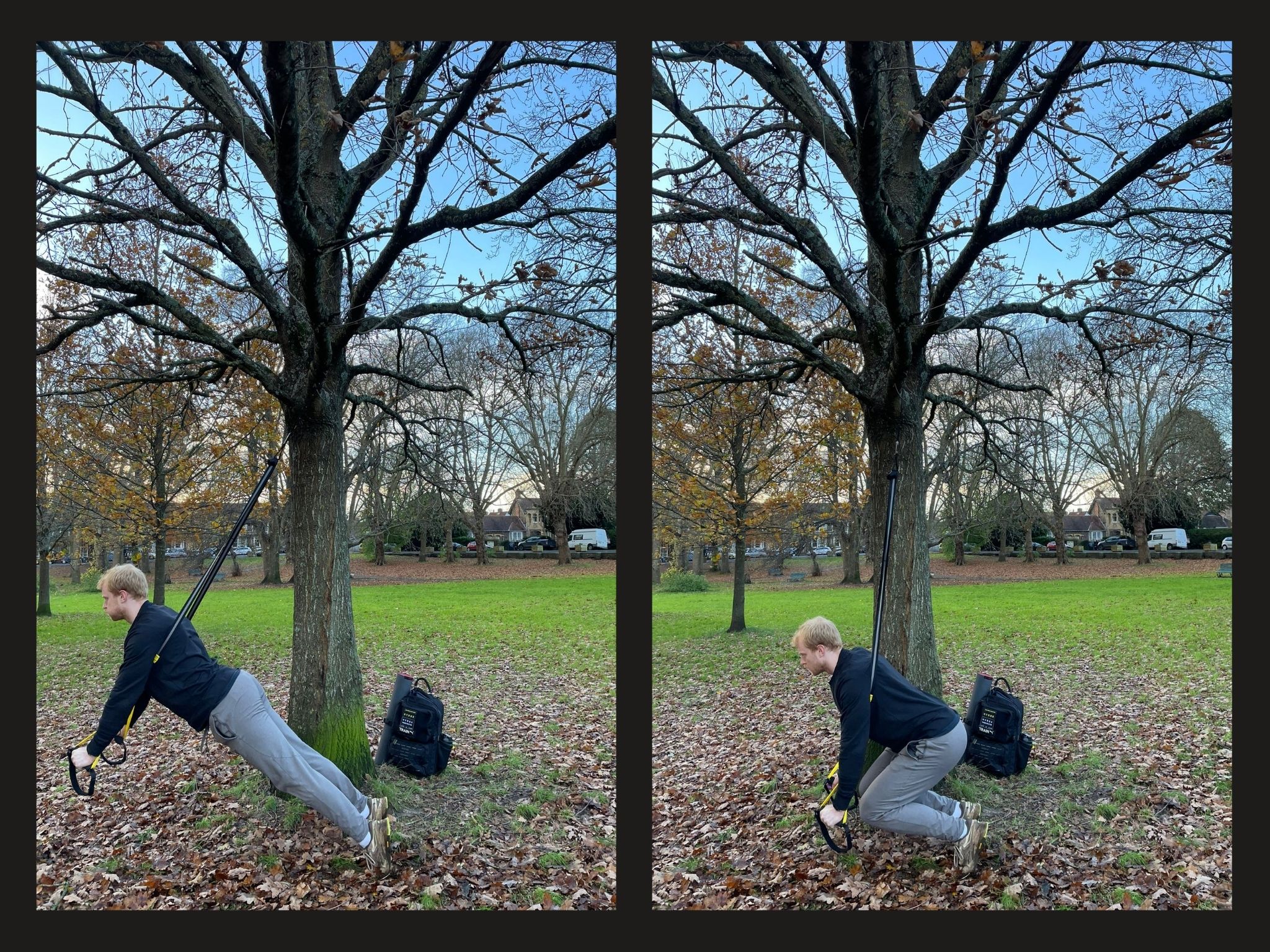
Reps: 30 seconds
- Make sure the straps are fully lengthened and stand in front of your anchor point, facing away.
- Hold the handles tight to either side of your chest with your palms facing each other and the straps coming under your armpits.
- Come onto your toes then walk until you’re leaning forward at a 45° angle. Your torso and legs should form a straight line.
- Lower your hips towards your feet until your knees form roughly a right angle, then drive through the balls of your feet to extend your hips and return to the starting position.
TRX chest press
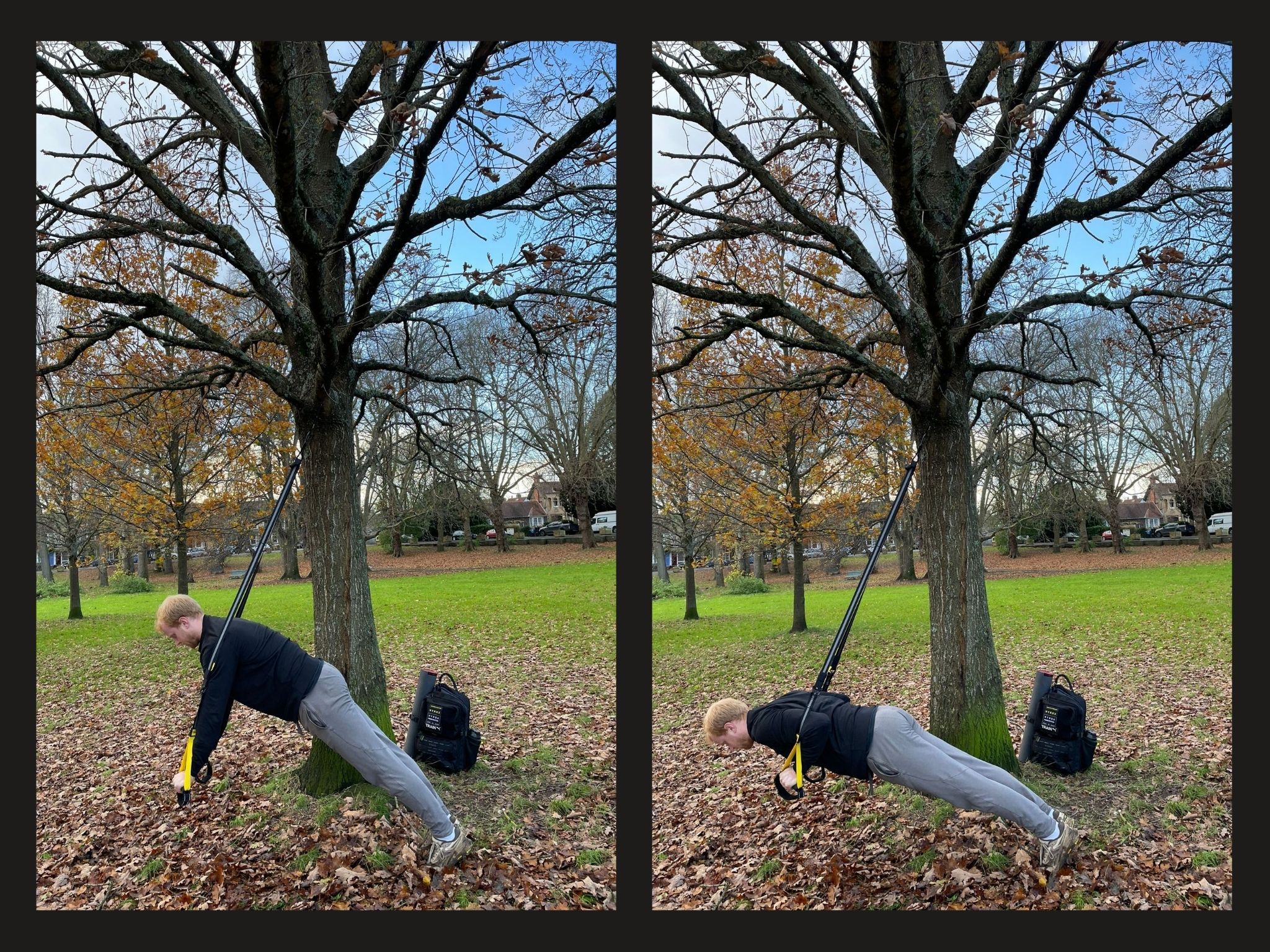
Reps: 30 seconds
- Keep the straps fully lengthened and stand facing away from your anchor point.
- Hold the handles, extend your arms away from you and lean forward to put your weight into your hands. Maintain an active plank position throughout.
- Keeping your elbows tight to your sides, bend your arms to lower your body, then drive through your palms while squeezing your chest to return to the starting position.
TRX lunge
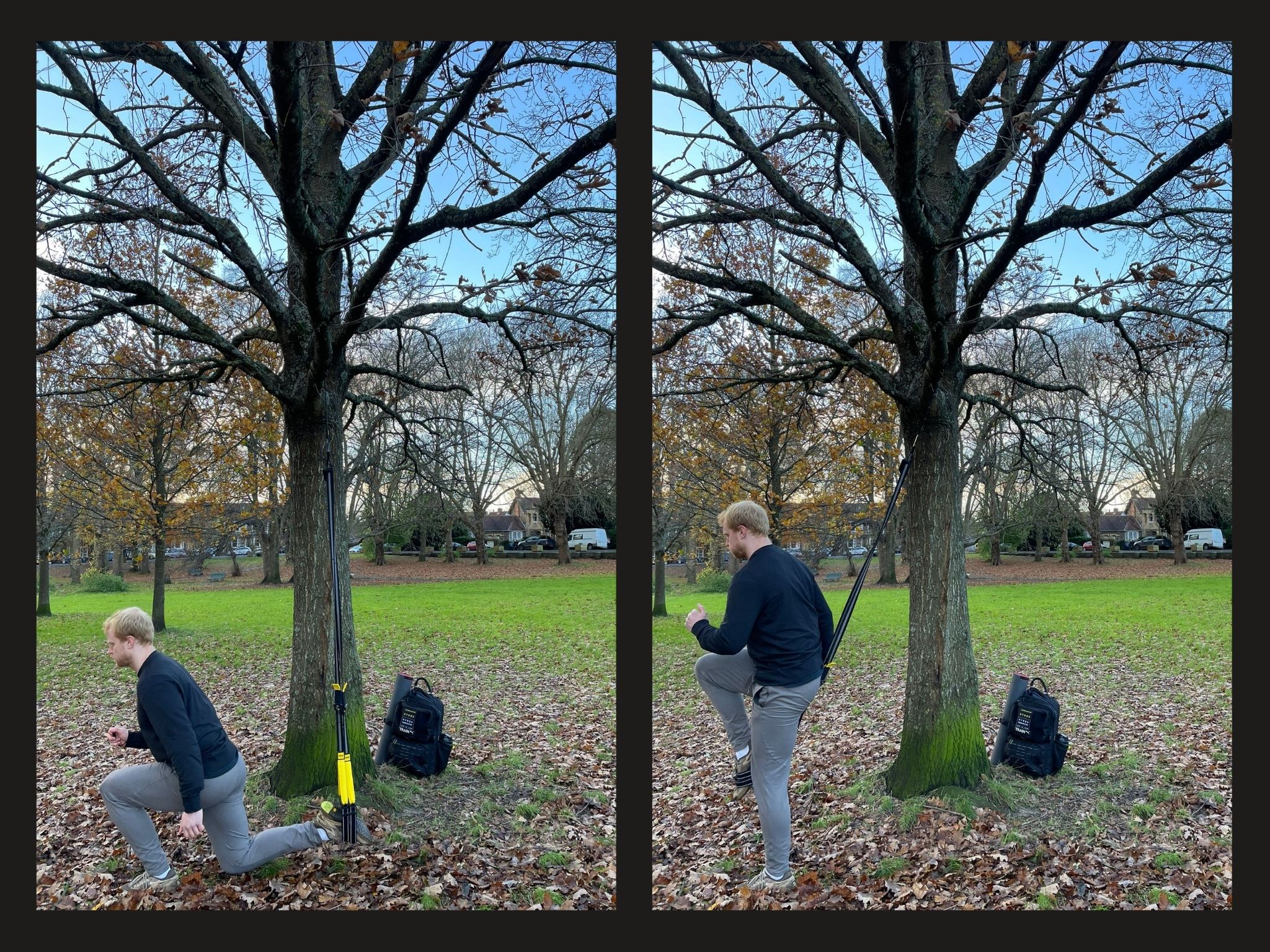
Reps: 30 seconds
- Set the strap so the handles come down to the middle of your calf and stand facing away from the anchor point.
- Place one foot in the cradle of both straps so it’s directly under the anchor point then allow the same knee to drop to the floor. Place your other foot in front of you so you’re in a lunge position.
- Drive through your planted foot to stand up, bringing your suspended leg forward until your knee is parallel with the ground.
- Lower it back down until the knee above your planted foot is at a right angle, then repeat.
- Perform this exercise for 30 seconds on each leg.
TRX power pull
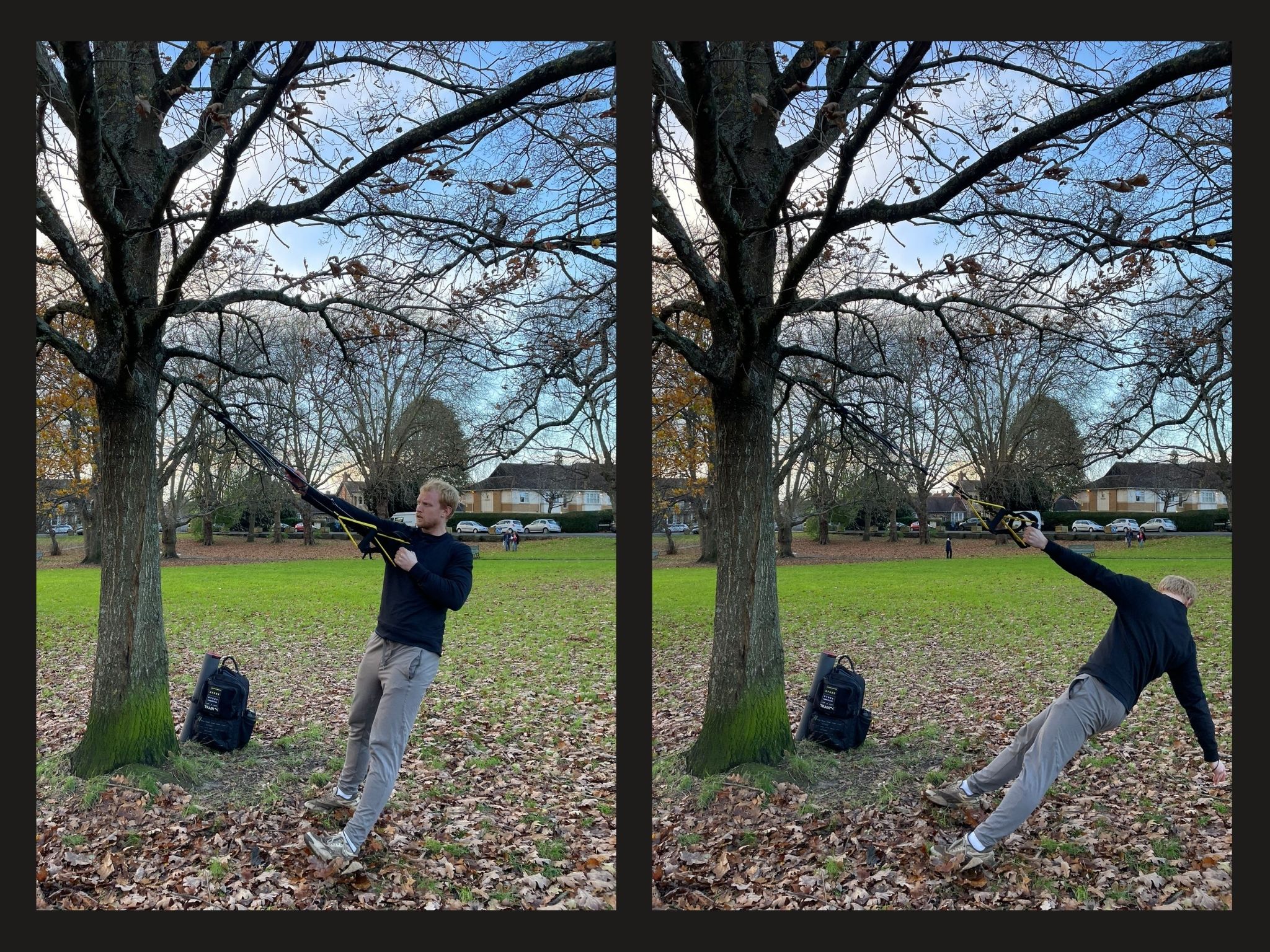
Reps: 30 seconds
- Set the straps to a medium length and place them in single handle mode (push the lower handle through the upper handle’s foot cradle two times).
- Stand facing your anchor point, leaning back and holding the strap with one hand.
- Rotate to reach your free hand as far up the TRX strap as you can, keeping this arm straight and using your other arm to pull you upwards.
- Reverse this motion to reach your free arm as far as you can towards the ground, allowing the other arm to extend.
- Perform this exercise for 30 seconds on one arm, then 30 seconds on the other.
TRX hip press
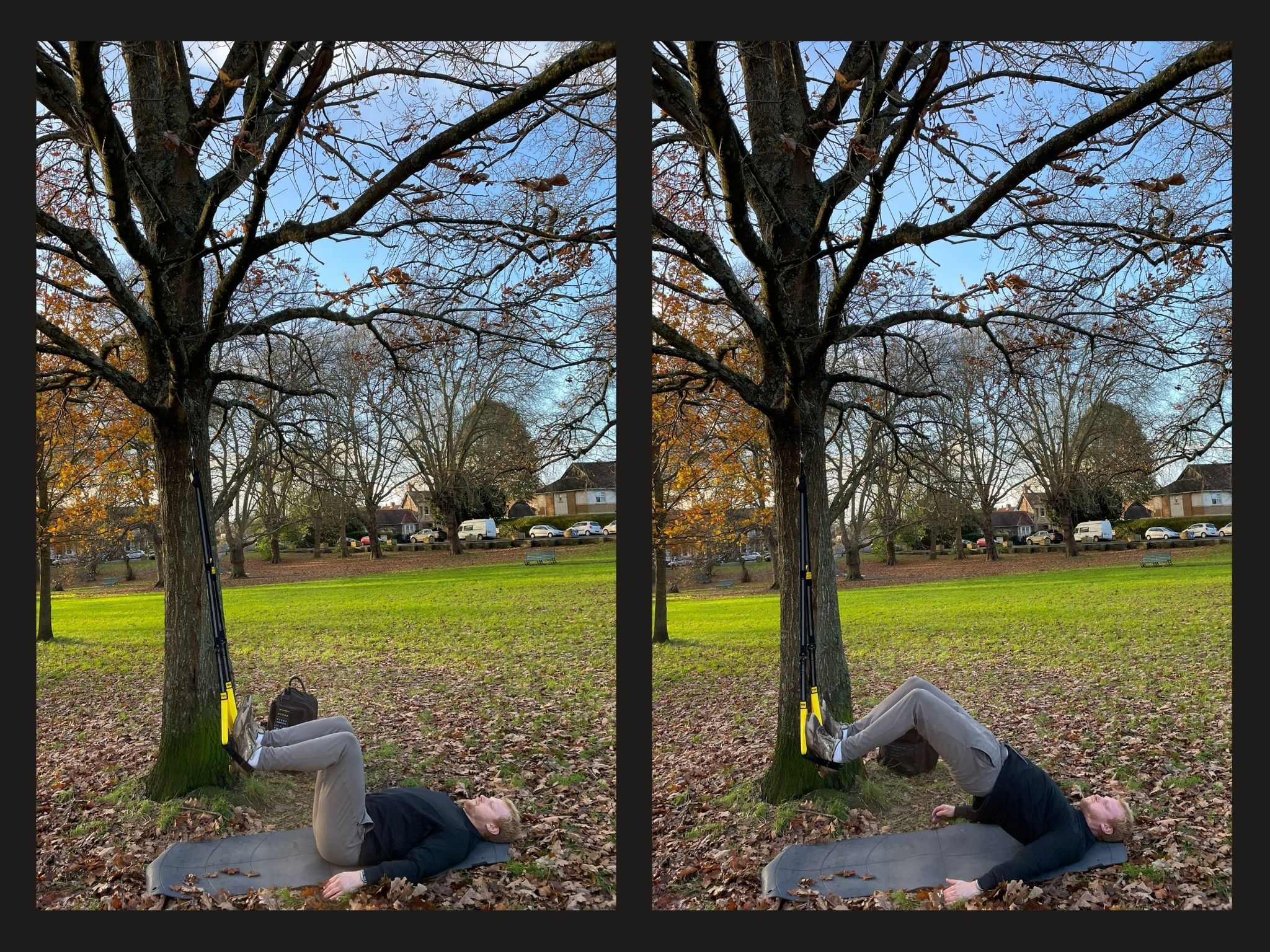
Reps: 30 seconds
- Keep the straps at a medium length.
- Lie on your back with your feet in the cradles under the anchor point, then bend your knees so they’re directly above the hips.
- Pull your toes towards your body and press your feet down to drive your hips upwards until your torso and thighs form a straight line.
- Slowly control your hips back to the ground.
TRX pike
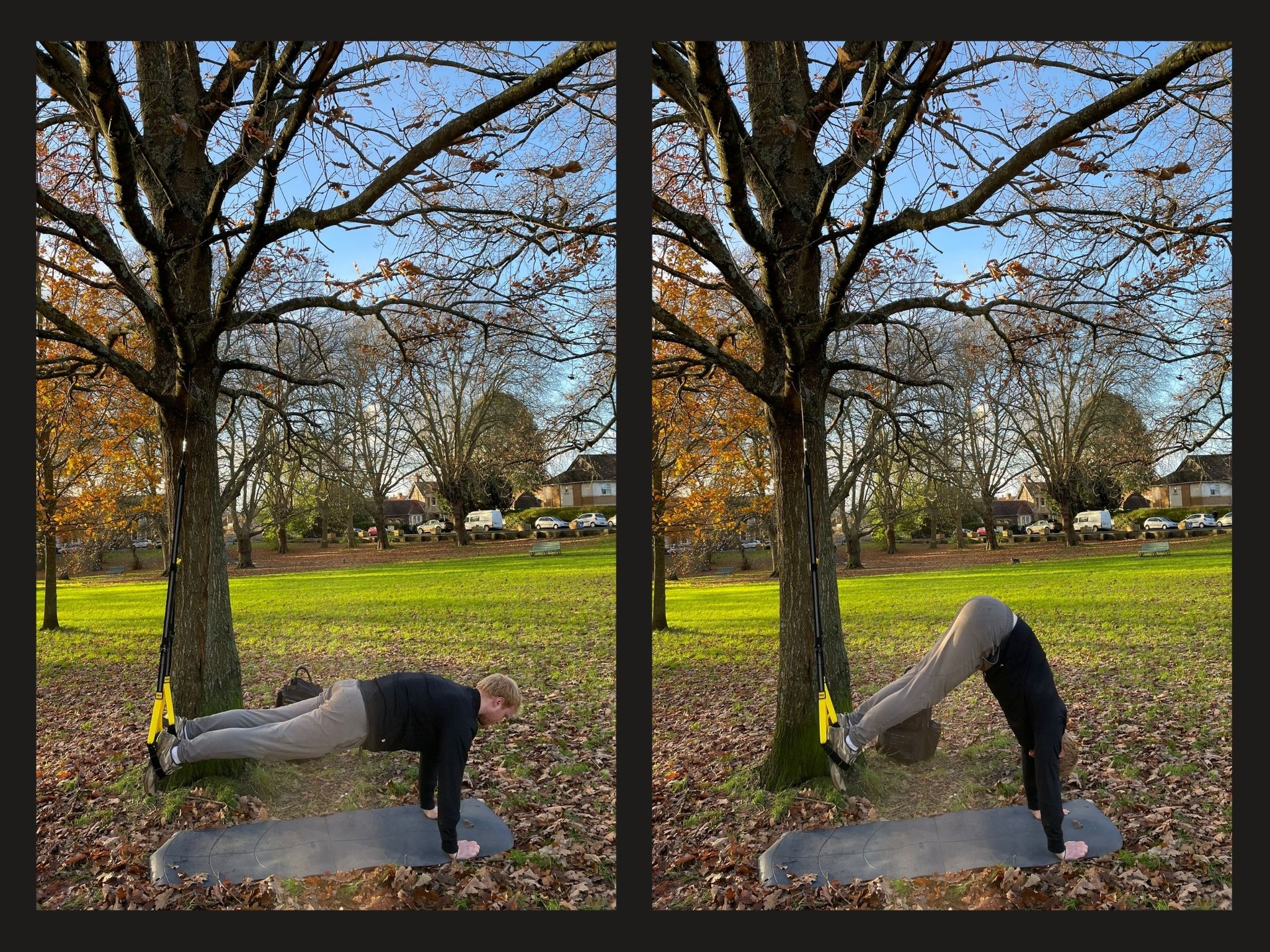
Reps: 30 seconds
- Keep the straps at a medium length then lie on your stomach with your feet in the cradles.
- Place your hands under your shoulders to come into a plank position, where your body forms a straight line from your heels to the back of your head.
- Keeping your back and legs straight, lift your hips as high as you can, then slowly lower back to the plank position.
My experience swapping the gym for a TRX machine
Practicality and portability are the TRX’s USPs. It was created by Navy SEAL Randy Hetrick, who fashioned some straps out of a jiu jitsu belt and parachute webbing to help him stay in shape while on deployment. Thus, the TRX was born – a fitness tool “for anybody, anywhere”.
My aim was to test this claim. And what better way to do this than in a sodden park in Bristol, during a brief break in the rain?
I was able to slip the straps into my gym bag, then sling them over a parallel branch at the park and set them up in seconds – a promising start. Then came the first exercise, the low row, which showcased the TRX trainer’s biggest perk.
It allows you to perform pulling exercises without weights. These exercises recruit the muscles in your back and biceps, making them pivotal to a balanced strength training plan, but they can be tricky to do without a weight to pull towards you. With the TRX, there are myriad ways to leverage your bodyweight for a multitude of pulling exercises.
I could feel the muscles in my back firing up and straining as I worked my way through 12 slow, controlled reps of the low row. This tempo was also effective for the chest press, and I really liked the squeeze I could feel in my chest muscles at the top of each rep.
Next up was something I was less familiar with: a TRX front squat. It felt a bit awkward, and while it did hit my quads (the muscles on the front of the thighs) I reckon I’d need a lot of them to get the same strength-building stimulus as a set of heavy squats. However, there are alternative squat exercises you can do with the TRX like an assisted pistol squat or Sissy squat, which I personally found more effective.
Read more: I tried a Hyrox race for the first time – here’s why I’m already signing up for another one
Another leg exercise in Mayatt’s workout was the lunge. By placing one of my feet in the TRX’s foot cradle, I was able to access a wider range of motion through the hip and knee, making the exercise more challenging than a standard bodyweight lunge. I also liked how it tested my balance, which is overlooked in many modern training plans. But, again, I was able to complete this exercise much more comfortably than its weighted equivalent.
This was not the case for the hip press – a variation of the glute bridge where your feet are suspended in the TRX cradles. Again, I was able to access a wider range of motion than a standard glute bridge, and elevating my feet placed more load on my glutes (butt muscles) and hamstrings (on the back of the thighs) while adding a slight stability element. The result was phenomenal, hitting my hamstrings more effectively than most exercises I’ve tried, weighted or otherwise.
The power pulls were an interesting addition, sprinkling some rotation (another element often omitted in training plans, but a crucial human movement nonetheless) into the workout. Then my session was rounded out by the pike, an abs burner which I found far more enjoyable, and more engaging for the core, than a standard plank
The verdict:
After the 20-minute session, my body felt well and truly worked out, which was the goal going in. If you factor in the walk from my house (right around the corner) and set-up time, the whole full-body workout took me about 30 minutes, which is pretty impressive on the efficiency front. The TRX was suprisingly versatile too.
“It’s an all-in-one package,” Mayatt tells me. “Gravity is your resistance with a suspension trainer. It is incredibly versatile and can be used anywhere from the back of a door in your home to a tree in the park or a gym.”
“When you need to change the resistance, you simply alter the angle of your body or stability to keep progressing. And it’s so easy to change the types of training you want to do, whether that’s mobility, stretching, offloading with rehabilitation movements and adding load with strength exercises,” he says.
Read more: A flexibility expert says these are the three best stretches for fighting tight hips
This versatility is why I think, if you’re someone who struggles to find the time to go to the gym, the TRX suspension trainer could be a worthy alternative.
What I enjoyed most was the way the TRX exercises recruited my chest and back muscles, providing a fresh take on strength training compared to the dumbbell and barbell moves I’m familiar with. It also put a dynamic spin on classic core training, and the next morning my aching abs let me know they’d been thoroughly tested by the pike exercise. So far, so good, as far as replacing the gym is concerned.
However, my legs (and quads in particular) felt like they could have used a little bit more love, so for lower-body training the gym still wins for me. Although, admittedly, I only tried a small selection of the leg exercises you can do on a TRX suspension trainer.
Read more: These are the 12 best men’s gym trainers you can buy, according to our expert tester
My other highlight from the workout was being given the opportunity to train outside. Yes, it was a chilly November day, and yes, I sometimes struggled to plant my feet in the slippery rain-soaked ground, but spending half of my lunch hour being active outside left me feeling so good that none of this seemed to matter.
So would I use the TRX suspension trainer again? Absolutely, especially if I’m heading on holiday or any other spot where I might have limited access to equipment. And would I rely on it as my only training tool long term? No, and that’s not to say you couldn’t. Most of Mayatt’s clients follow an exclusively TRX-based training plan, and if this is the form of exercise you find most enjoyable and accessible, that’s exactly what you should do.
But I enjoy variety and trying new things. With each new exercise, sport or training method I dabble in, I keep my favourite bits and come back to them time and time again. As a result, the TRX is sure to make up part, not all, of my training plans going forward. And the TRX hip raises will definitely be a frequent feature.
How to start using a TRX suspension trainer
“Simple is better,” says Mayatt. “Start with basic movements, then you can learn endless variations of these to train all the muscles of the body.”
He also recommends starting with three workouts per week, centred around the seven foundational TRX movements; the push, pull, squat, hinge, lunge, rotation and plank (which just so happen to be covered by the seven exercises in the workout above).
“Learn how to perfect your foundational movements, change your strap lengths and become aware of how you move using gravity as your resistance,” Mayatt advises. “Each workout can target the whole body, but it’s best to split the foundational movements so you have a focus within each session. For example, it would be best to pair hinge with push, squat with pull and lunge with rotation. Plank is always the basis of all TRX exercises so is included in all workouts.”
Read more: New to the gym? Try this trainer’s five-move full-body workout for beginners
Is a TRX better than lifting weights?
This is one of the most popular TRX questions, but it’s a bit too vague to have a definite answer. Better for what, and better for whom?
“This is honestly down to personal preference,” says Mayatt. “If you want my personal opinion, then for me it is, purely on the basis that I can do my whole workout with one piece of kit rather than having to collect different weights each time I want to change an exercise or resistance.”
Whereas, for me, I enjoy using tools like the TRX as part of my training, but I always come back to lifting weights as I like using the amount I lift as a way of measuring my progress. So the answer to the question is subjective, but my personal verdict is that a blend of training methods is the best way to go.



